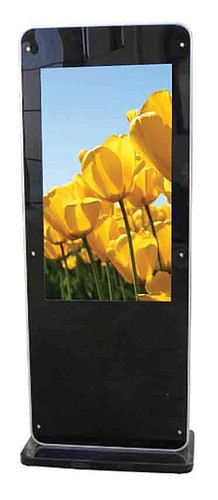- April 15, 2024
-
-
Loading

Loading

The city of Sarasota’s Downtown Improvement District is investigating a new free downtown Wi-Fi service that would act as an electronic wayfinding application to help pedestrians find the shops they want to access and where deals are taking place.
DID Operations Manager John Moran and city officials met with Delray Beach-based Blueweb Mobile Media CEO Daniel Kinney Tuesday to discuss the system.
Moran said the meeting was encouraging and said the DID had a tentative handshake agreement with the company if issues with the city’s sign code can be addressed.
Although the Wi-Fi service would be set up and built for free by Blueweb, the city would have to pay for interactive wayfinding screens that would look like 42-inch, flat-screen televisions mounted to the front of merchant buildings. The wayfinding screens cost $12,500 each, and 6-foot-high information kiosks are also available for $11,500 each.
Kinney’s company recently installed a similar system in Delray Beach. He said the system would act as a virtual wayfinder through the use of a touch screen and by means of a free mobile application visitors and residents could access from their cell phones.
“People can come up to the signs and touch them like a virtual iPad and find where they want to go,” Kinney said.
The city’s sign code, however, wouldn’t allow the signs on downtown buildings to be flashing and constantly changing.
To avoid creating an amendment to the city’s sign code, Moran said the city could work with Kinney to create virtual signs that would only move once they are touched. When the signs aren’t being used, the city’s logo could be displayed.
The wayfinding screens would include sponsorship branding with downtown merchants.
“The point is to set up a Wi-Fi network for free via means of mobile advertising with merchants,” Kinney said.
Kinney called the concept “a win-win for everyone.”
“The city will receive a revenue share of whatever we bring in for wayfinding advertisers, the public gets free Wi-Fi, and we (Blueweb) win by collecting revenues for assets sold onto the website.”
The website, Kinney said, will be similar to a Groupon site, in that it would allow users to view local downtown deals and interactive advertising.
Moran said the DID will also be investigating whether it can receive income from Blueweb, which has tentatively agreed to give the district a 20% interest in the profits.
Kinney is proposing 25 interactive signs throughout downtown but said the system could include as few as one-dozen signs and as many as 36 signs.
A 25-sign system would cost the city approximately $312,500, and a 12-sign system would cost approximately $150,000.
Kiosks are also an option and could replace those that exist on each quadrant of St. Armands Circle.
“The signs and kiosks draw crowds to the merchants who allow them to be installed and direct downtown visitors to both the deals of the day and all of the downtown shops,” Kinney said. “They are virtual directories that also draw visitors to those (merchants) who participate in advertising agreements.”
But the Sarasota City Commission will have the ultimate approval on the proposed system.
The city of Sarasota had tentatively approved in January 2010 a $1.4 million wayfinding system for downtown that would have included eight non-virtual kiosks.
But the new group of commissioners (three new commissioners were seated in May) nixed the proposal once it found out it would cost the city approximately $3.5 million to maintain that system over three years.
The DID had agreed to contribute $49,000 to the former plan for kiosks within its DID boundaries.
But Moran hopes the commission will consider the new system, which includes free installation and cheaper costs for the interactive components.
In the next 60 days, Moran will contact other downtown organizations to gain their approval for the project, while also working with city staff to make sure the virtual sign application wouldn’t defy city code.
Delray Beach’s new Blueweb system, meanwhile, was operating under a trial run Wednesday with one trial, interactive kiosk in place so the city can monitor how popular it is with residents and visitors.
Delray Beach officials said it’s too soon to gauge interest in the new system.
Kinney said he is working with Fort Lauderdale, Coconut Grove and Key West officials to bring similar systems online.
Moran is excited about the possibilities.
“Everybody who we have talked with about the program, including several city employees, has agreed this would be a worthy system to have, and we should all help pave the way to make it happen,” Moran said.